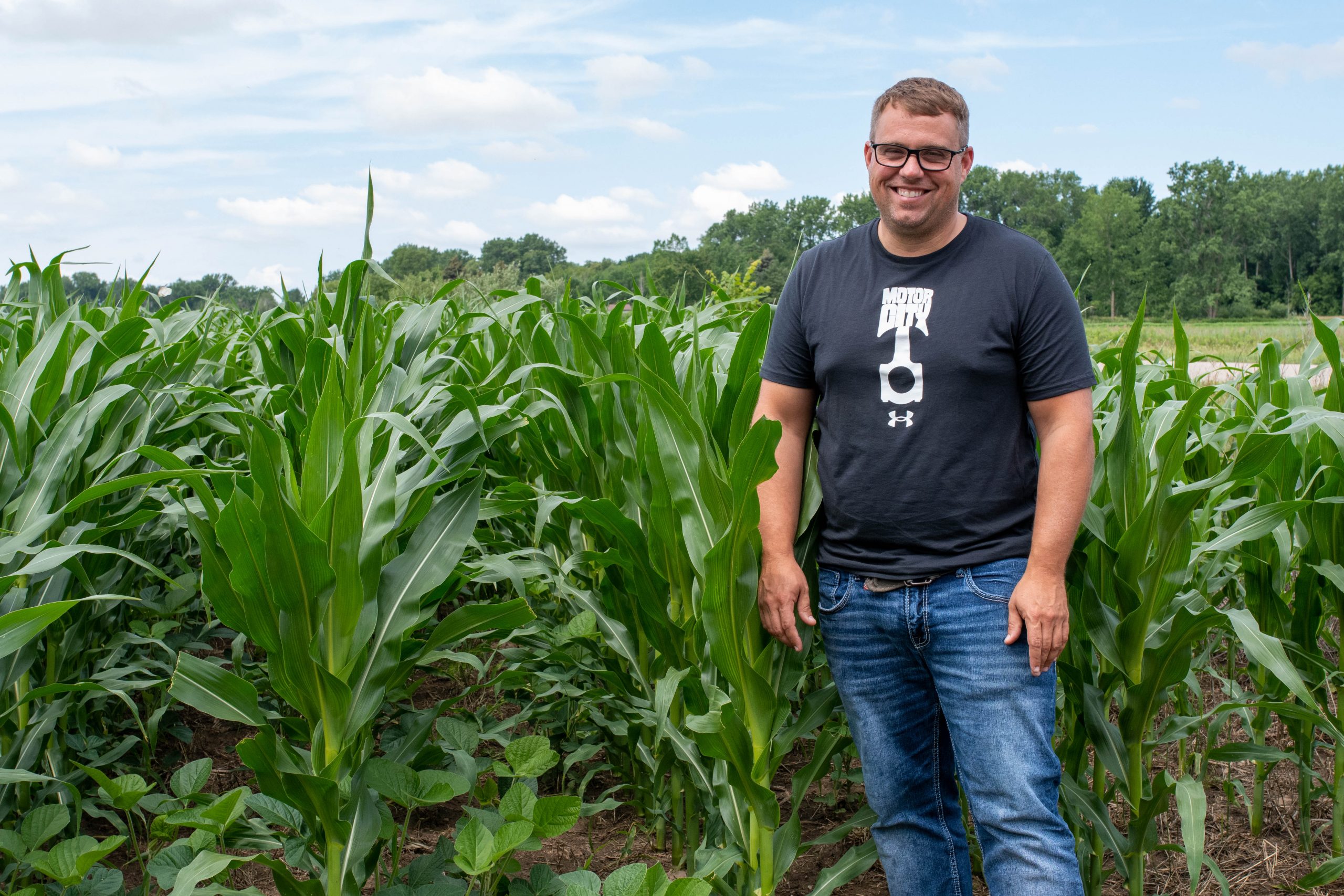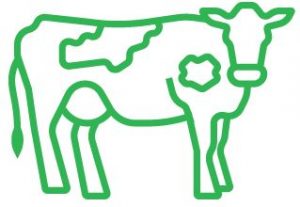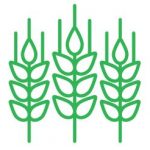MMPA is committed to cooperative social responsibility and sustainable business practices throughout our entire supply chain. At the farm level, MMPA members are also on a sustainability journey. We’re checking in with a handful of member farmers leading the charge with this sustainability spotlight series.

For Brent Robinson (Mid-Sanilac Local, District 8) sustainability is simply “something you can continue to do.” A dairy farmer in Michigan’s Thumb region, he’s rethinking many of the traditional systems and approaches to farming to ensure his farm is viable for years to come.
“We need to come up with a new system to generate long term agriculture sustainable production, only way to do that is with regenerative agriculture practices,” Robinson said.
A first-generation farmer, Robinson started with 35 cows in 2004, eventually growing in size and teaming up with Brent Moyer and later Gert and Gertie van den Goor. Today, Robinson is one of four partners in Green Point Dairy, which features two locations and a total of 5,800 cows.
“We have a three-pronged approach: effect on environment, life of the animal and well-being of the people who are here,” Robinson said. “We provide workable, livable incomes for people here. We don’t want adverse environmental impacts, known or unknown. And we are constantly improving the life of the cow.”
Sustainability is interwoven across the farm’s operations, from energy efficiency to water usage to soil health. Robinson says their farm has implemented several energy efficiency solutions available, including their plate cooler, LED lights and automatic thermostats on their cooling fans for the cows. They recycle their water, are cognizant of run off and erosion with the implementation of a no till system of their fields.
A new pilot project for 2021 is a subsoil moisture monitoring system to reduce the amount of electricity required to irrigate their crops. “It is teaching me something and we are definitely using less water than we would have traditionally,” he says.
Robinson has also implemented various systems to ensure soil health, biodiversity and nutrient retention including crop rotation, buffer zones and cover crops. Through MMPA’s sustainability survey, these practices have been recorded and a Biodiversity Action Plan was also developed to document the management of 100 acres of woodland.
The farm also fosters biodiversity through a precise cover crop program that helps with nutrient cycling and nitrogen recovery on their fields. “I custom mix cover crop blends for each field so if I think this field needs ‘this,’ it gets ‘that,’” he said. “We make specific blends for every field for the planting day.”
In another trial, Robinson tested planting soybeans between the rows of corn in the same field. He started with 60 acres last year and found their best silage came from the corn interplanted with beans. This year, they scaled the program to 600 acres and are encouraged by the results. “What we’re hoping is to still have soil biodiversity in a monoculture system,” he said.
The farm is in a building process and Robinson is hoping for continuous improvement in their land year-over-year. “These fields aren’t going to be mine forever. Someday I’m not going to be here. It really is a natural resource, the land is. In our system we have in the U.S. and most countries, we have private property, so they say, ‘Oh that’s Brent’s farm,’ but it actually is the country’s farm and it’s everybody’s farm. I just get to use it for right now.”
Robinson is continually looking to learn from other farmers and share knowledge across the industry. His advice for other farmers is to be aware of new ways of doing things.
“I’m not going to tell anyone that it’s perfect, that it’s a straight-line path to success, but I can tell you without a doubt, that these people are not crazy talking about regenerative agriculture and sustainability. It can be done. And I definitely don’t have the answers to it, but I have seen the difference in my farm, and it didn’t take long.”
Regenerative agriculture: The regeneration, or restoration, of renewable resources, including soil, within an agriculture system to achieve a sustainable form of agriculture.
Biodiversity: Biodiversity is the sum total of all the plants, animals, fungi and microorganisms in the world, or in a particular area; all of their individual variation; and all the interactions between them. Agrobiodiversity therefore includes not only a wide variety of species, but also the many ways in which farmers can exploit biological diversity to produce and manage crops, land, water, insects and biota.
SOURCE: USDA NATIONAL AGRICULTURE LIBRARY

FARM
Green Point Dairy
Caro and Marlette, Michigan

HERD
5,800 total,
5,200 milking

CROPS
corn, soybeans, wheat, alfalfa, sugar beets and dry beans

VERIFICATIONS
- MMPA Sustainability Survey
- Michigan Agriculture Environmental Assurance Program
- Certified Nutrient Management Plan
- Biodiversity Action Plan
- Farmers Assuring Responsible Management Animal Care
This article was originally published in the July/August 2021 issue of the Milk Messenger. Subscribe »

